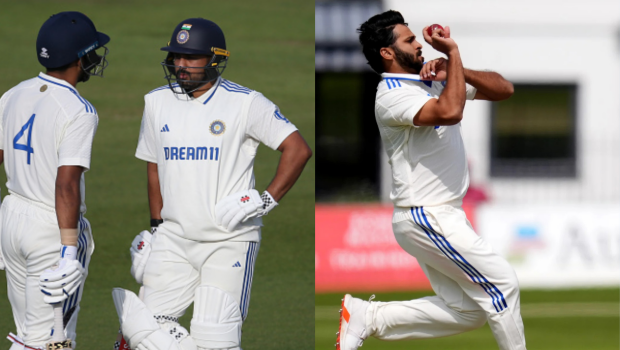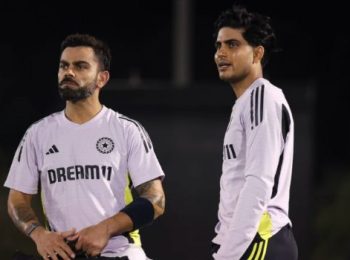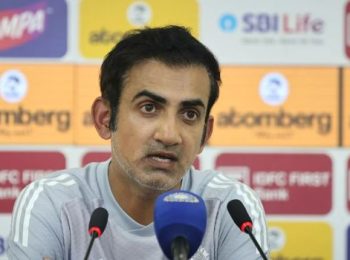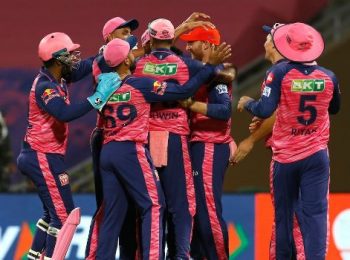India’s turnaround in the second Test was nothing short of remarkable. After a disappointing start to the series, they showed resilience, tactical clarity, and execution under pressure. The adjustments made in terms of team selection and approach paid off handsomely. What stood out was how well they adapted to conditions that were fairly typical of the subcontinent – warm weather, a pitch that held together reasonably well, and a toss that went in their favour after England made a questionable decision.
But to focus solely on those external factors would be unfair to India. They built their advantage patiently and ruthlessly, controlling the game from key moments and sealing the result with authority.
A huge part of that resurgence has been the emergence of Shubman Gill as a leader. Thrust into a new role, Gill looked composed and precise in his execution. His batting reflected a tighter technique, and his defence was very sound. In conditions where being solid in defence is crucial, this discipline will serve him and the team well. The surfaces may have been flatter than anticipated, but India’s batting unit made the most of it, posting big totals and asserting themselves in the match. This run-making spree has given them momentum and confidence heading into the crucial third Test at Lord’s.
The return of Jasprit Bumrah is a welcome boost for India, but it also raises questions about the composition of their bowling attack. The real challenge remains how to take 20 wickets in what is likely to be relatively docile conditions at Lord’s. The pitch there traditionally doesn’t break up, and with the forecast indicating warm and sunny weather, the likelihood of sharp deterioration is low.
The surface is typically true and offers a fair contest, especially if there’s grass on Day 1. India must keep this in mind – it’s not just about continuity or rewarding performances from the previous Test. It’s about finding the right blend to dismiss England twice on a pitch that won’t offer much assistance.
Lord’s can be a tricky venue to read. Overhead conditions matter significantly, and while the current forecast suggests a dry, warm Test, things can change. England would ideally want a pitch with a hint of green and some early movement to justify bowling first. Historically, Lord’s has allowed teams to bowl on the first morning and still chase well in the final innings. That said, misjudging the pitch could be costly. If England bowl first and the surface turns out to be flat under the sun, they could once again find themselves trailing from the outset, as happened at Edgbaston.
With that in mind, India may need to reconsider their bowling options. While Prasidh Krishna showed promise and didn’t look out of place in the Test arena, he might be the one
to make way. The ideal combination would be to go with a pace trio of Mohammed Siraj, Bumrah, and Akash Deep, possibly bring Kuldeep Yadav back in. Kuldeep offers variety and control, something that could be crucial on a placid surface. The temptation to play Washington Sundar again is understandable, especially after his useful runs and utility with the ball, but India must question whether he and Ravindra Jadeja together can take the wickets needed in an innings. Jadeja’s batting remains a strength. But in my view, I would go with someone like Kuldeep at Lord’s who may have the better chance of troubling the English batters.
England, too, have their own selection dilemmas. Jofra Archer looks likely to return, and Chris Woakes is a near-certainty given his outstanding record at Lord’s. The more complicated decision surrounds Gus Atkinson. The management might be keen to play him, but concerns about his match fitness and rhythm could hold him back. In such a scenario, Jamie Overton could get the nod. England need bowlers who can ask tough questions and not allow the game to drift. Their attack lacked bite in the second Test, and this must be addressed with urgency. England won’t mind a pitch that has pace and bounce.
Batting-wise, India have found a solid platform with Yashasvi Jaiswal and KL Rahul setting the tone at the top. The No.3 spot remains a topic of discussion, with Karun Nair and Sai Sudarshan in contention. However, having already made a change for the second Test, the think-tank might resist further tinkering. England, on the other hand, will be watching Zak Crawley and Ollie Pope closely. Despite Pope’s century in the first match, his overall consistency is still under scrutiny, especially with Jacob Bethell present in the squad. Though unlikely to break into the XI just yet, England would want to keep Bethell ready, potentially giving him opportunities in the remaining matches if form dips elsewhere.
Some individual performances have illuminated the series already. Jamie Smith, in particular, was a revelation. To walk in under pressure, with the team wobbling, and deliver such an assertive innings alongside Harry Brook was remarkable. Their partnership not only steadied the ship but also brought England back into the contest briefly. Doing so against an in-form Indian team – even without Bumrah – is no small feat. It showed that England still possess the firepower to challenge, but their game management has to improve.
The turning point at Edgbaston was clear – England’s choice to bowl first, and their inability to seize the initiative at 200 for 5. Had they broken through at that moment, the narrative could have been different. But once that chance slipped, the game slowly moved away from them. This underlines how critical it is to get the big moments right, especially when you bowl first.
The toss at Lord’s will therefore be pivotal. At 10:30 on Day 1, the captains will have to make a call that could shape the course of the match. If the sun is out and the pitch looks firm, England may have to bat first, even if it’s not their preference. If the skies are overcast and there’s a hint of green, then bowling might be justified. It’s a fine balance, and the margin for error is slim. Get it wrong, and England could once again find themselves fighting from behind.



























